1985 Corvette – The Ultimate Guide
While there were few who questioned the technological superiority of the 1984 C4 over earlier generations of Corvette, it’s lack of robust horsepower and outright performance left many questioning this new version of America’s most beloved sports car. Chevrolet listened to the criticisms and quickly began to revamp the Corvette platform to become a more competitive contender.
After all, the U.S. economy was beginning to rebound from the recession that had plagued the United States (and indeed, the entire world) in the early eighties. The cost of fuel dropped as the world economy saw an oil glut – the direct result of global conservation after the 1970’s energy crisis. This new oil surplus (and corresponding drop in fuel prices) quickly brought potential consumers who were once more looking for big, powerful, performance cars.
In addition, Ronald Reagan and his administration had convinced Japanese automakers to voluntarily limit their car exports to the United States via the Voluntary Restraint Agreement (VRA), which had the intended result of encouraging American consumers to purchase American-made automobiles.
When the C4 Corvette returned for a second year in 1985, it did so with some much needed improvements.
Gone forever was the Cross-Fire Injection System that had been introduced as part of the C4 only a year earlier (and had managed to survive for only a single production year on the C4 platform.) Replacing this awkward and somewhat uninspired system was a new “Tuned Port Injection” fuel delivery system – a system that was essentially the German Bosch fuel-injection system which featured a revised intake manifold. This new system provided an individual fuel injector for each engine cylinder, featured tuned runners and included a new mass air flow sensor, all of which would aid in the car’s improved performance.
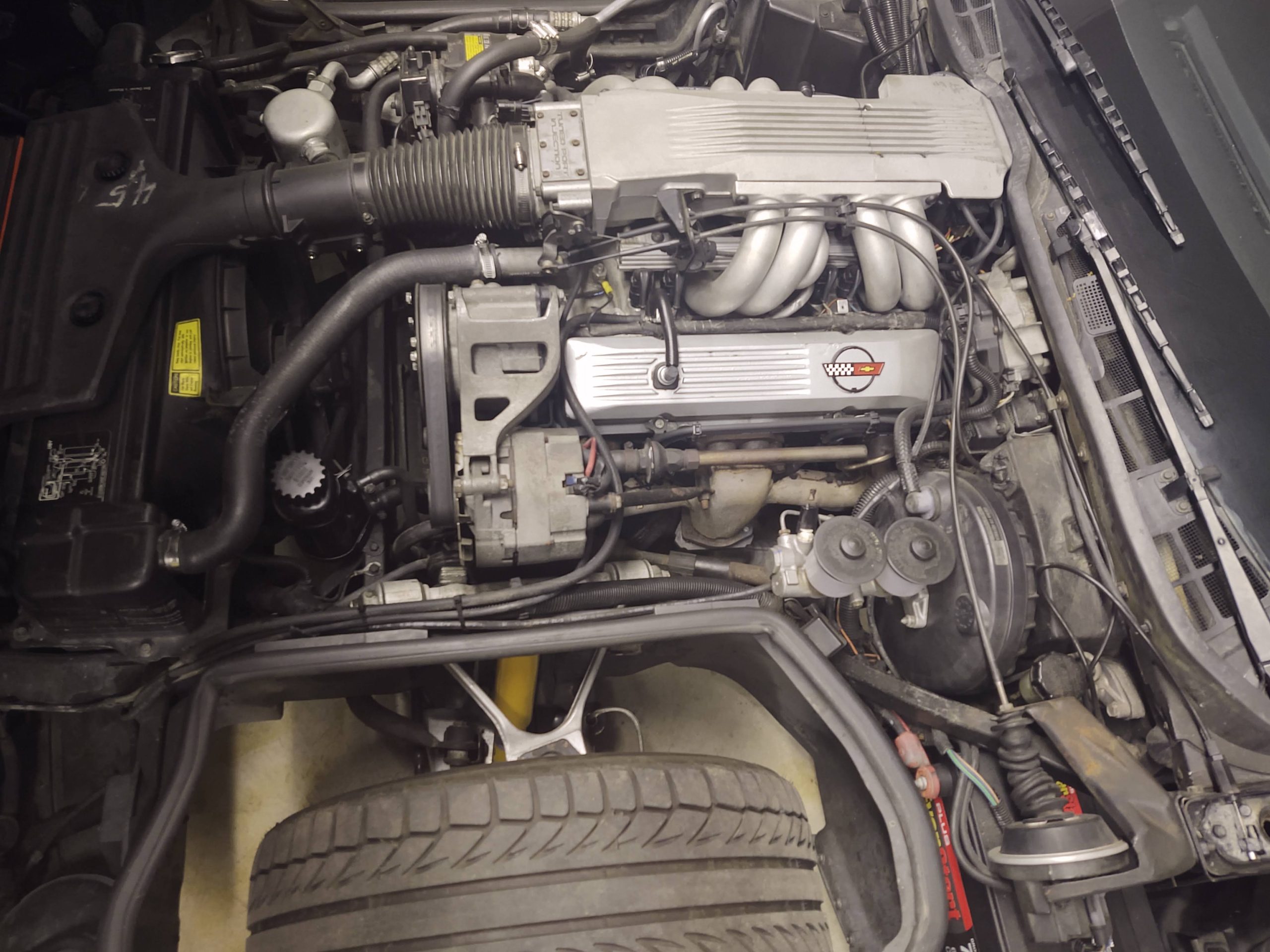
In fact, the introduction of the new “Tuned-Port Injection” system, along with a half point compression increase (9.5:1) improved the engine output by 25 horsepower, pushing the engine to a total of 230 Brake Horsepower (BHP) at 4,000 RPM. Similarly, the engine’s torque was increased by 40lbs/ft, taking it to 330lbs/ft at 3,200 RPM (versus the former 290lbs/ft at 2,800 RPM found on the 1984 C4 model.) The fact that these changes were so extensive, and that they had dramatically improved Corvette’s performance, motivated Chevrolet to use an entirely new designation for the engine – and thus the L98 was born.
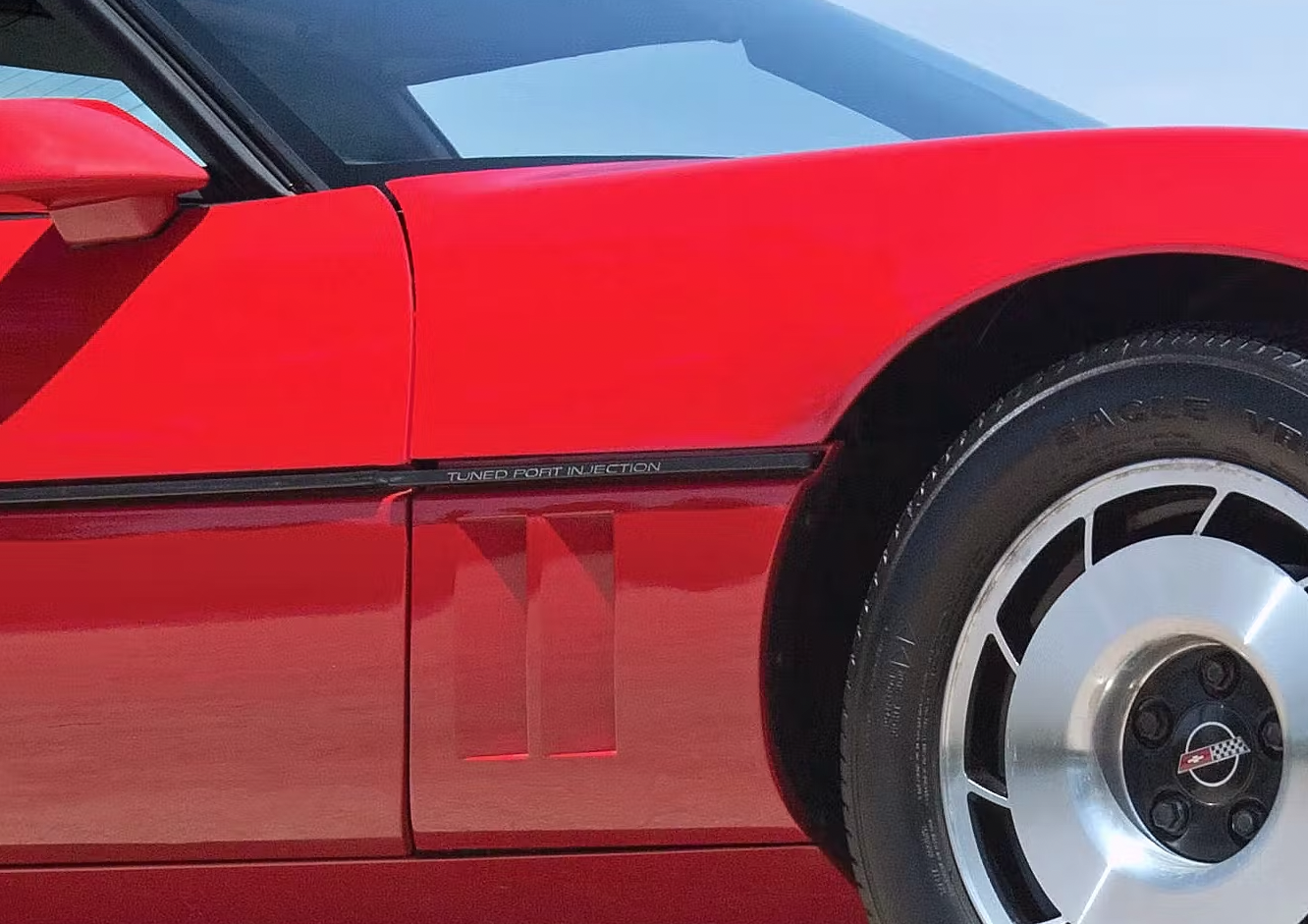
Just as the engine had received an overhaul, the Doug Nash 4+3 Overdrive manual transmission underwent a less radical, but equally important, upgrade to help improve its performance. For the 1985 model, the 4+3 received a heavy-duty 8.5-inch differential ring gear (an increase from the 7.9 inch ring gear in the 1984 model) for extra longevity. As a convenience factor, the transmission’s override button was relocated from the console to atop the shift knob. Further, the transmission’s onboard computer was reprogrammed to make the overdrive function less intrusive. Additionally, the electronics governing the lockup torque converter clutch were also revised.
Another item that, General Motors sought to resolve in the 1985 Corvette was the car’s harsh, and often unforgiving, ride. Responding to the many complaints they received, Chevy responded by softening both the spring and shock rates. This modification was inclusive on all Corvettes – even those suited with the Z51 suspension package (an option in 1985.)
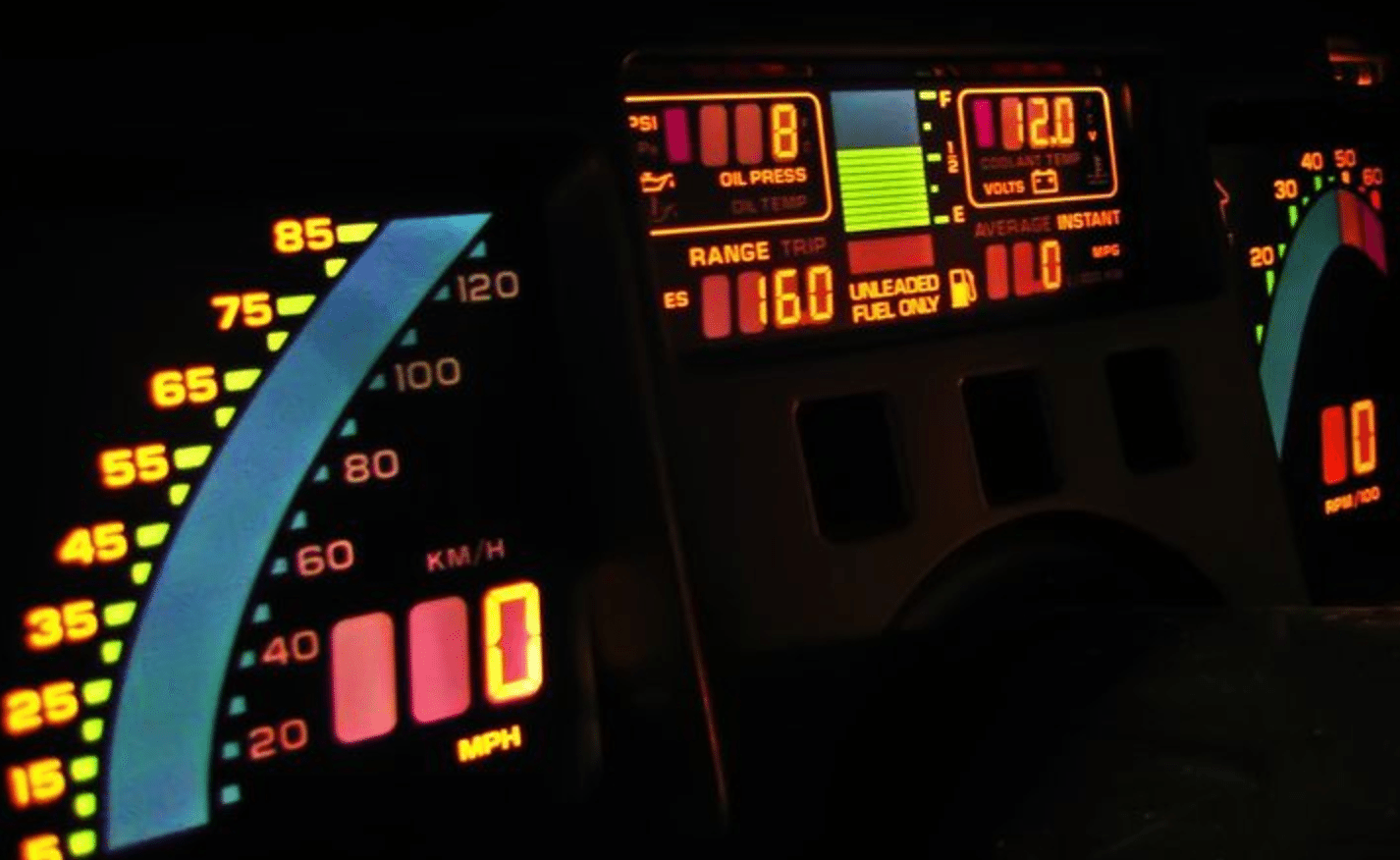
With regard to the Z51 package, other suspension changes were introduced as well. This option now included larger fore and aft stabilizer bars which helped to offset total roll stiffness after GM introduced the softer suspension calibrations. Further, the package included wider, 9.5 inch wide tires to be mounted in the front (as well as the rear) of the car. Also included were Delco-Bilstein gas-pressurized shocks and a revised heavy duty cooling system. The Delco-Bilstein shocks were also offered as a separate option on the base level Corvette.
Just as General Motors had made improvements to the steering and suspension systems, GM engineers continued to take great interest in how the C4 Corvette handled. After all, the C4 Corvette had been spawned off the design criteria that what it lacked in horsepower would be compensated for in car structure, design and drivability. As production of the 1985 Corvette progressed, the Z51 suspension package option continued to undergo revisionary design work, a process that was led by GM engineer John Heinricy. His intent was to develop the Corvette to a point where it could be classified as a“showroom stock GT car.”
Interestingly, the changes that Heinciry made to the suspension resulted in the 1985 Corvette being lowered ¾ of an inch. This change, though nearly indistinguishable to the naked eye, reduced the drag coefficient to 0.33. Further, when geared with the 3.07:1 rear axle, allowed the 1985 Corvette to reach 150 miles per hour. Of course, achieving 150 miles per hour still required the upgraded rear end, but overcoming this particular speed barrier had been accomplished and solidified the C4 Corvette as a more serious sports car in the eyes of performance enthusiasts.
DID YOU KNOW: The exterior styling of the C4 Corvette was completely unchanged from 1984 to 1985 with the exception of the side badges on the front fenders of the car, which were changed from “Cross-Fire Injection” to “Tuned-Port Injection”. Because of the harsh ride experienced by owners of the 1984 Corvette, the spring rates were decreased in 1985 – a 26% reduction in the front springs, a 25% reduction in the rear.
As GM, engineers set out to have Corvette achieve higher speeds, it was determined that the steering caster angle should be increased by one degree (to a total of four degrees) to produce better straight-line stability. Similarly, the braking system was bolstered to produce greater braking power by the addition of a larger brake master cylinder and brake booster as well as different brake pad linings. These minor, but significant changes were just a few of the many considerations that GM engineers were making when responding to the criticisms they had received on the 1984 Corvette
While the appearance of the C4 Corvette was well received by critics and enthusiasts alike, there were still several small refinements that were made to its cosmetic appearance. The interior received a minor facelift which included revised instrument graphics and optional leather upholstery for the more expensive Lear-Siegler Seats. Though subtle, these changes further solidified the overall aesthetic quality of the car. Additionally, Chevy engineers began seeking out and eliminating the sources of the rattles and squeaks that had been such a constant annoyance to consumers who had purchased the 1984 model.
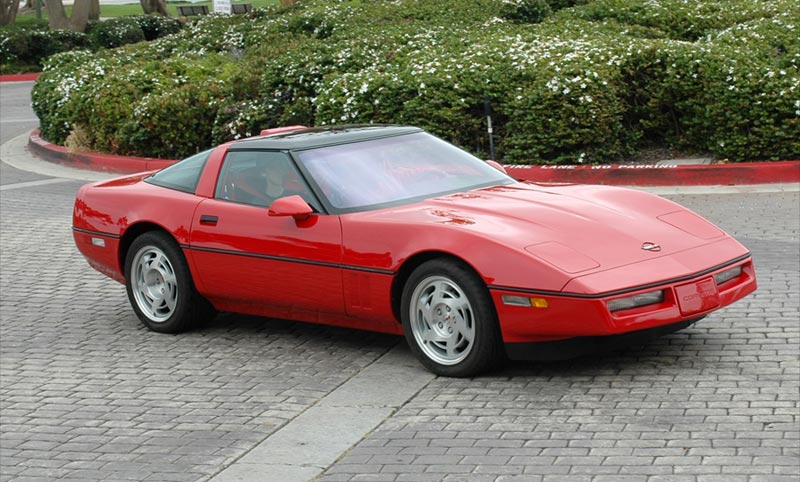
Despite its many improvements, the 1985 Corvette was still met with a mix of praise and criticism. On one hand, they complimented its improved braking and road handling characteristics. At the same time, they criticized the revised short rack steering. In fact, automotive testers claimed that the steering was too quick for around-town use. Further, the ride was still deemed as being overly harsh despite the refinements that had been made to the suspension system. Ultimately though, the overall opinion of the 1985 Corvette was that General Motors had improved on their earlier efforts and had taken the C4 in the right direction.
In 1985, the Chevy Corvette sold for approximately half of the comparably equipped Porsche 928, yet was capable of handling/performing at the same level as the German Sportscar. In fact, when doing a performance comparison of the 1985 Corvette and the Porsche 928, the Corvette outran the Porsche and was named the “Fastest Car In America” after hitting top speeds of 150 miles per hour. The results of this survey, combined with the return of the Corvette to racing circuits in 1985, were so unsettling to the Porsche engineers that they bought two 1985 Corvettes, shipped them to Germany and took them apart in an attempt to determine what made them so quick!
Car and Driver magazine was among the automotive media that celebrated the new model’s improved automotive refinements. After sampling two Corvettes, one with an automatic transmission and the base suspension and one with the upgraded Z51 suspension and a manual transmission, they recorded results that were considered more than respectable for their time. The automatic ran a quarter mile time of just 14.1 seconds at 97 miles per hour. The manual version ran the quarter mile in just 14.4 seconds and reached a top speed of 95 miles per hour. Car and Driver went on to proclaim that the Corvette to be “America’s fastest production vehicle capable of 150 mile per hour top speed”. In less than two years time, General Motors had succeeded in improving the performance of the C4 to a point where it could rival the competition worldwide.
One of the great challenges that was about to be set forth by General Motors was the development of an entirely new engine. After all, the current L98 350 cubic inch small-block V8, (with its cast iron block and its rocker operated valve gear), was nearly thirty years old and, despite the refinements of the fuel injection system at the beginning of the model year, was not the performance powerhouse that had become synonymous with earlier generations of Corvette. Still, Federal edicts of the day made the idea of reworking the generations old V8 into something more powerful an unlikely course of action. Despite that fact, it was in 1985 that GM made the decision to begin the fundamental reworking of the 350 small block – and would ultimately lead to the development of an all new V8 engine.
It was decided that the revised engine would have to be capable of returning the same fuel economy as the L98 engine but would have to achieve the performance levels of Ferrari, Aston Martin and Porsche. In the words of Chevrolet Chief Engineer Fred Schaafsma, this new engine (and the Corvette it would power) was to be “…the best performing production car in the world.” Ironically, that reworking would impact the future of Corvette for all time, giving birth to one of the greatest Corvettes ever – the ZR1.
Production Volumes
However, the cost of these improvements caused a sizable increase in the sell price of the 1985 Corvette. The cost of the C4 (base price) jumped from $21,800 in 1984 to $24,403 just a year later. As a result, the C4’s sales dropped dramatically, resulting in the lowest number of annual sales in more than ten years. Despite the decline in sales, General Motors knew that they were moving in the right direction with this new design, and continued to layout further design revisions which would help the Corvette gain greater success in the years to come.
1985 Corvette Specifications & Performance
See the complete breakdown of technical specifications for the 1985 Corvette, including engine, suspension, brakes, body dimensions, and power. Read more: 1985 Corvette Specifications.
Engine & Transmission
The 205-horsepower 350 CID V8 had been just about the only carry over from the 1982 Corvette to those made for 1984 (there were no 1983 Corvettes sold to the public as the new design was not completed in time). The new engine was a different version of that engine, and raised horsepower from by 25 to 230. This engine also provided a slight change to the exterior look of the car in the form of “Tuned Port Injection” badges on the front fenders of the car.
There were still two transmissions to choose from – a four-speed automatic and a Doug Nash “4+3” manual transmission that featured electronically engaged overdrive in the top three years. This year’s model did feature a reprogrammed computer for the latter transmission that made the overdrive less intrusive.
Performance
0 – 60 mph for the 1985 Corvette came in at 5.7 seconds while the quarter mile was a 14.1 second blast, both much faster than the 1984 model year. Read more: 1985 Corvette performance.
1985 Corvette Vehicle Identification Numbers (VIN)
The last six digits begin at 100001 and run thru 139729, accounting for each of the 39,729 Corvette Coupes built in 1985. Each Vehicle Identification Number (VIN) is unique to an individual car. For all 1985 Corvettes, the Vehicle Identification Number was stamped on a plate on the inner vertical surface of the left windshield pillar visible through the windshield. Read more: 1985 Corvette VINs.
1985 Corvette Price & Options
Core Features & Factory Options
The 1985 interior was the same as 1984 except that the instrument panel display was updated for improved readability. The fully digital instrumentation panel was revised to address complaints that the previous version was too busy. At some point in the 1985 production run, the overdrive defeat switch was moved from the console to the shifter. The sport seat was available in leather along with cloth. Note the emergency brake handle location, in the door sill below the driver’s left knee. It had been part of the center console in the C3 and the new location was a departure from the sports car roots.
All the Corvette news for 1985 was under the hood. The “Cross-Fire Injection” of 1984 (and 1982) fame was gone as was the label on the side molding. A real no-compromise fuel injection system, not seen on a Corvette since 1965, took its place. It was a Bosch designed and built system and was the source of significant improvements in power (was 205 hp, now 230 hp) and fuel economy.
Colors
Exterior colors for 1985 included Silver Metallic, Medium Grey Metallic, Light Blue Metallic, Medium Blue Metallic, White, Black, Gold Metallic, Light Bronze Metallic, Dark Bronze Metallic, Bright Red, Silver/Grey, Light Blue/Medium Blue, Light Bronze/Dark Bronze. Of the 13 colors available, once again Bright Red was most popular, making up 26.24% of total production. Black and White were also popular, with 19.14% and 11.21% of total production.
Pricing & Options
The Base Corvette Coupe with 350 cu. in. 230 hp engine with automatic transmission started at $24,403 for 1985. Chevrolet listened to the customers who told them that the C4 Corvette’s ride was too harsh and lowered spring rates so being transported via Corvette was that much less punishing. The more compliant suspension also meant fewer rattles and squeaks. The Performance Handling Package option (Z51; $470.00) saw reduced spring rates but anti-sway bar diameters were increased to keep that handling edge.
| CODE | DESCRIPTION | QUANTITY | RETAIL PRICE |
| 1YY07 | Base Corvette Sport Coupe | 39,729 | $24,403.00 |
| AG9 | Power Driver Seat | 37,856 | $215.00 |
| AQ9 | Sport Seats, Leather | —— | $1,025.00 |
| AR9 | Base Seats, Leather | —– | $400.00 |
| —– | Sport Seats, Cloth | 5,661 | $625.00 |
| AU3 | Power Door Locks | 38,294 | $170.00 |
| CC3 | Removable Transparent Roof Panel | 28,143 | $595.00 |
| D84 | Two-Tone Paint | 6,033 | $428.00 |
| FG3 | Delco-Bilstein Shock Absorbers | 9,333 | $189.00 |
| G92 | Performance Axle Ratio | 5,447 | $22.00 |
| K34 | Cruise Control | 38,369 | $185.00 |
| MM4 | 4-Speed Manual Transmission | 9,576 | $0.00 |
| NN5 | California Emissions Requirements | 6,583 | $99.00 |
| UL5 | Radio Delete | 172 | -$256.00 |
| UM6 | AM-FM Stereo Cassette | 2,958 | $122.00 |
| UN8 | AM-FM Stereo, Citizens Band | 16 | $215.00 |
| UU8 | Stereo System, Delco-Bose | 35,998 | $895.00 |
| V08 | Heavy Duty Cooling | 17,539 | $225.00 |
| Z51 | Performance Handling Package | 14,802 | $470.00 |
| Z6A | Pear Window + Side Mirror Defoggers | 37,720 | $160.00 |
Read more: 1985 Corvette pricing and factory options.
1985 Corvette Gallery
Tt’s no surprise that the 1985 models were changed very little from the models that were built the year before. As had become the Corvette tradition, after a major styling change like the one that had occurred the previous year.


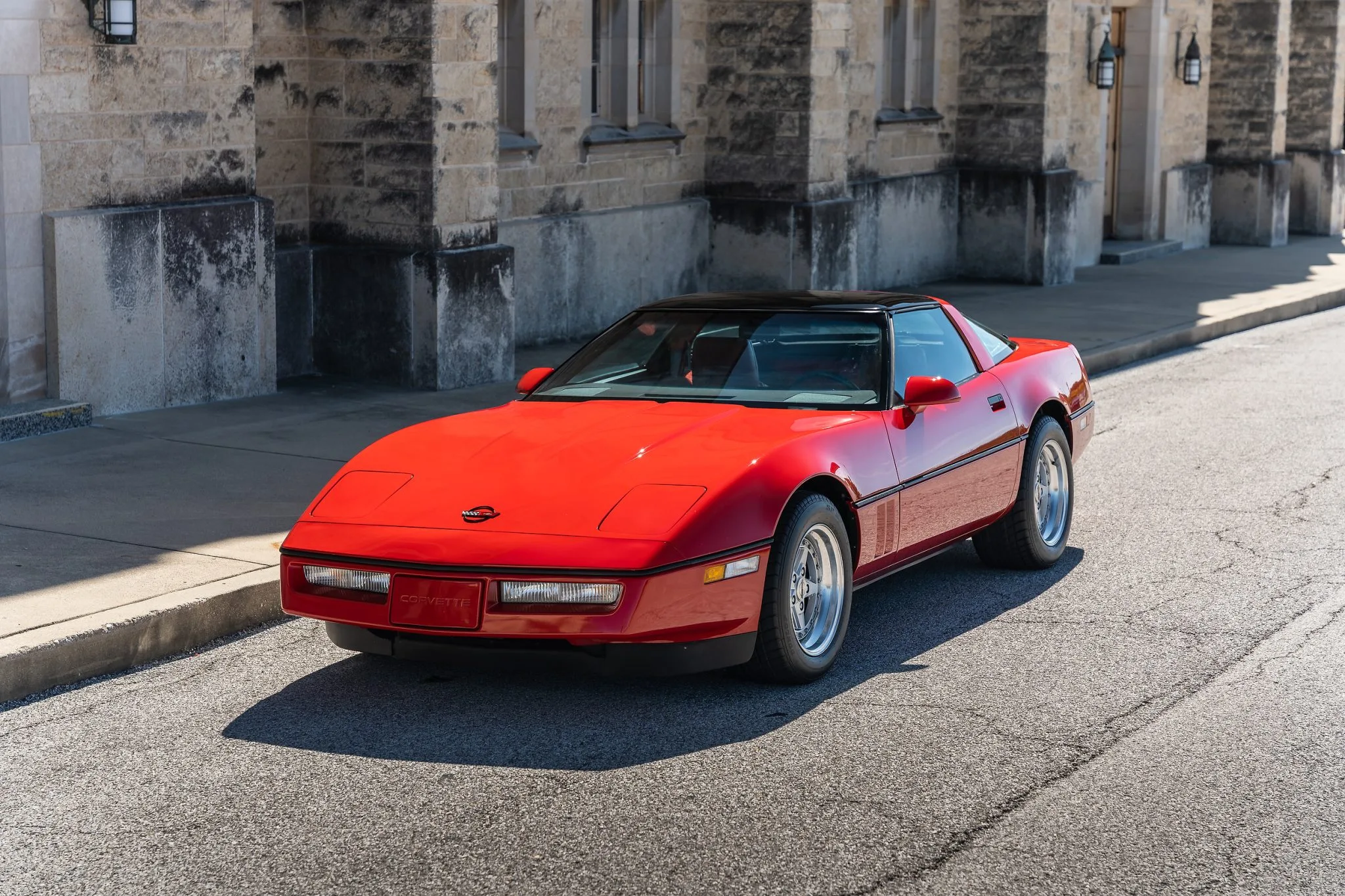
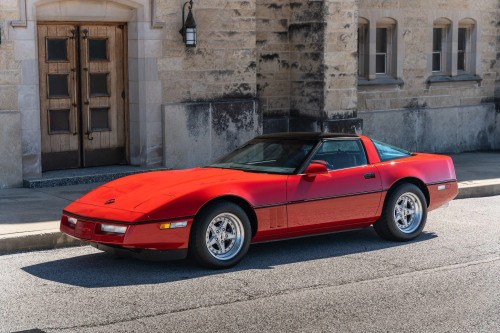
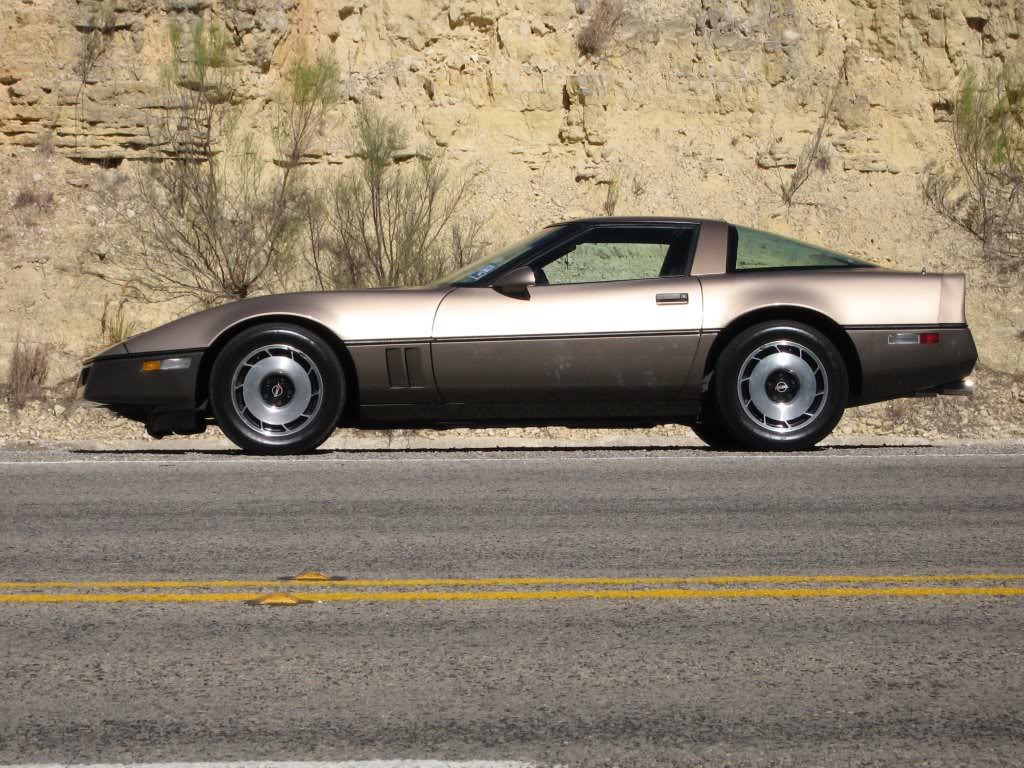
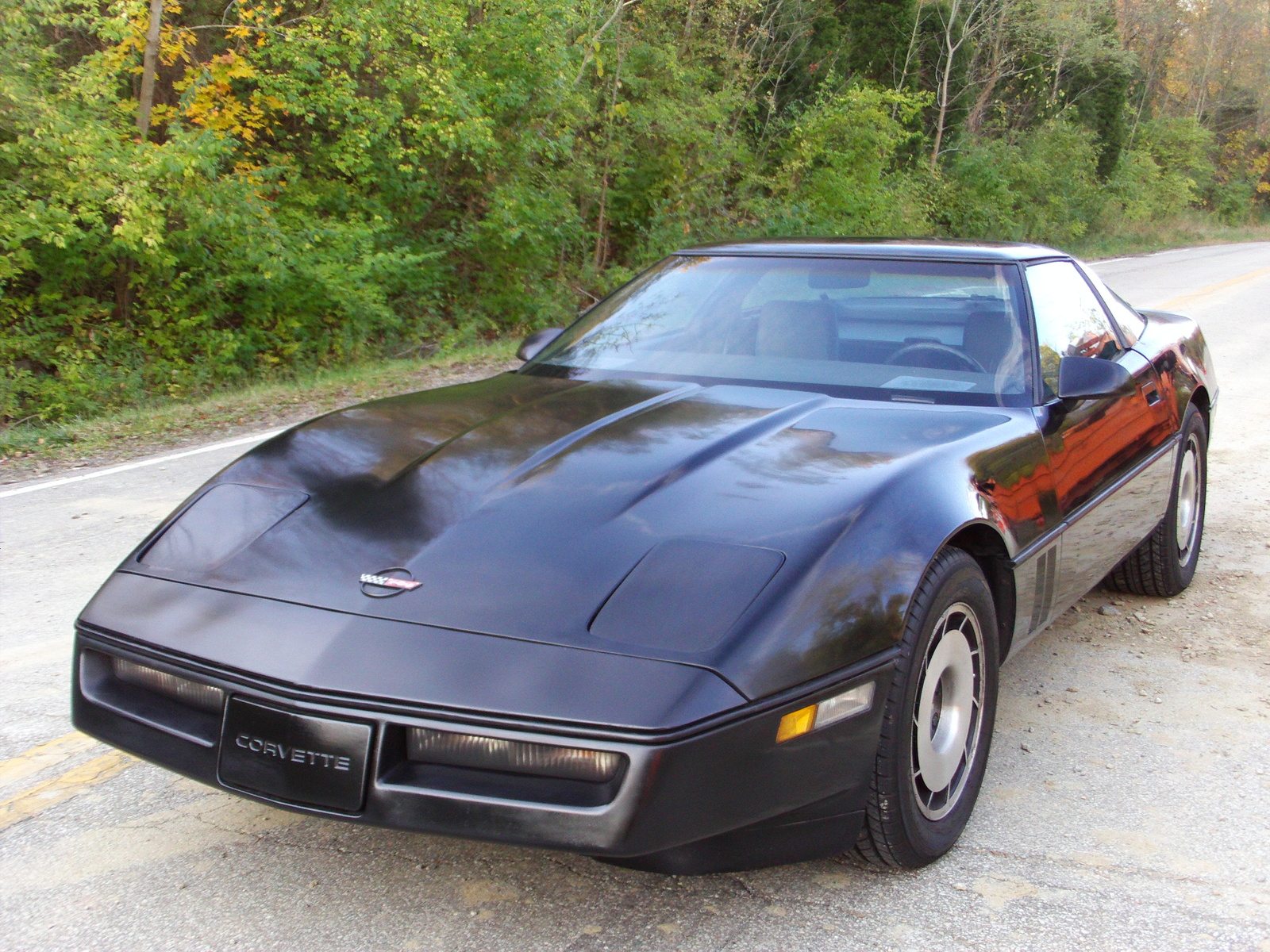
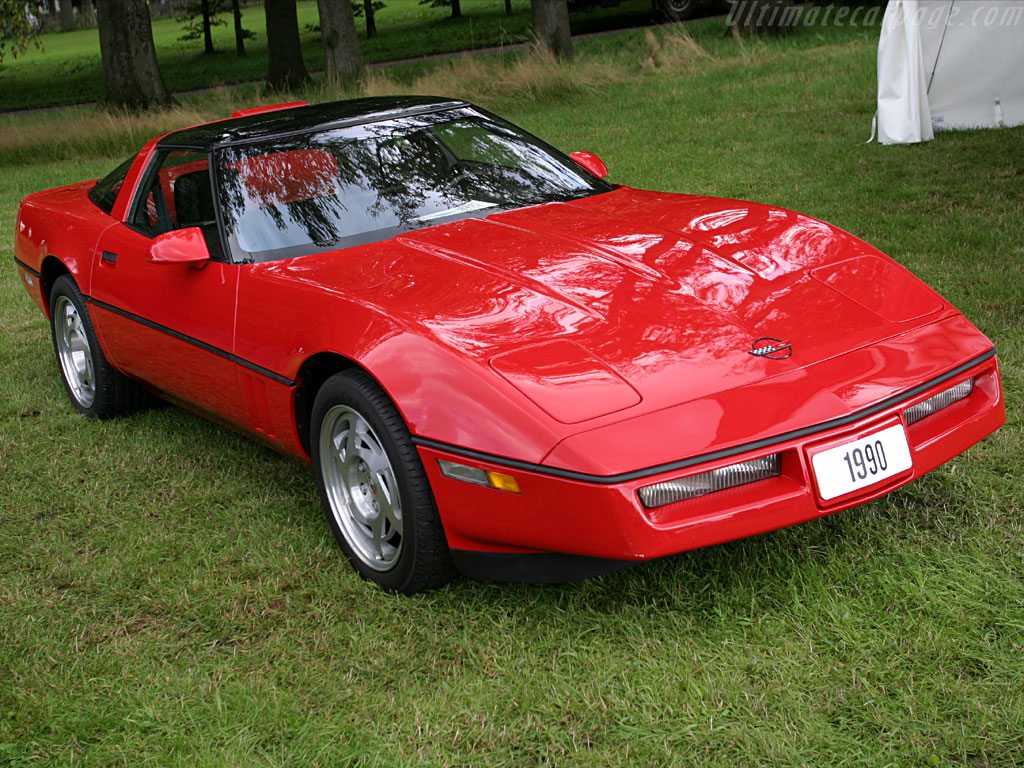
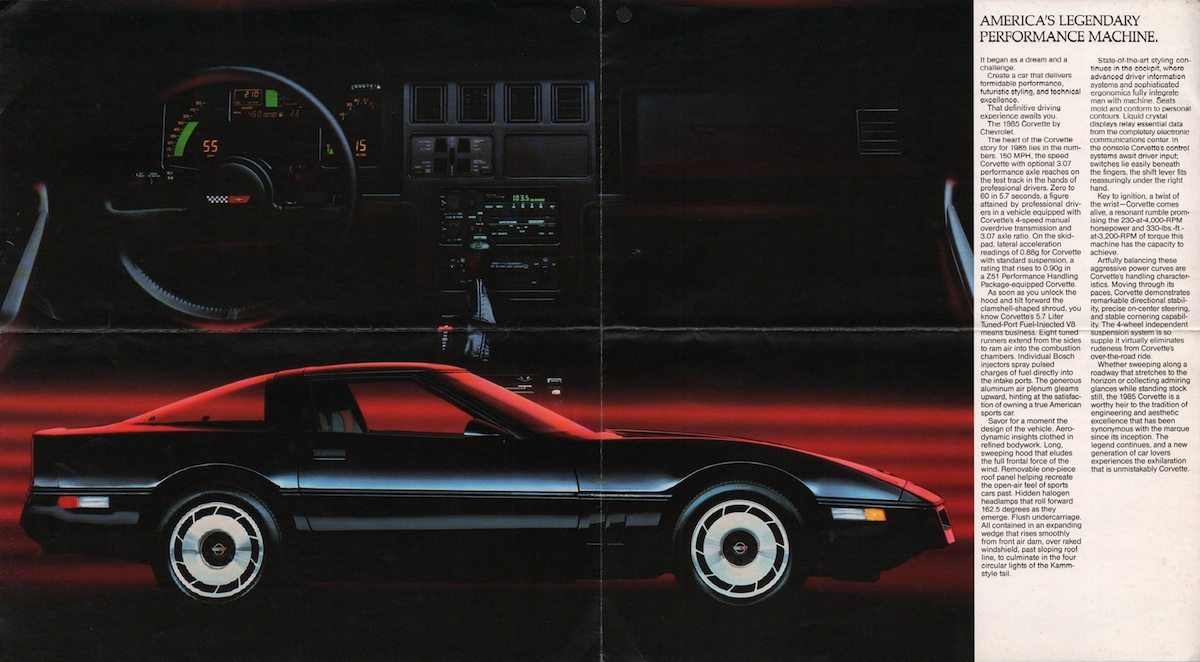
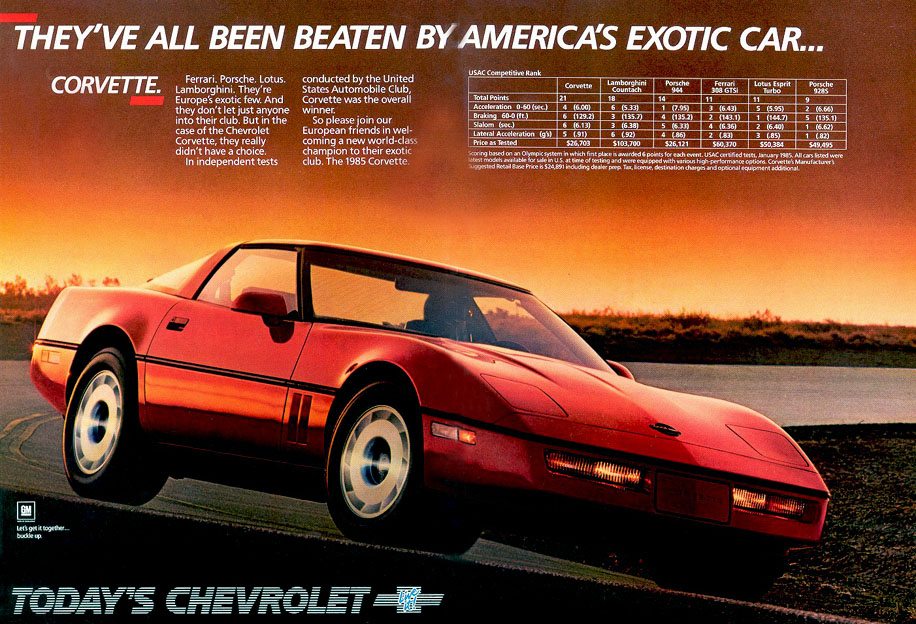
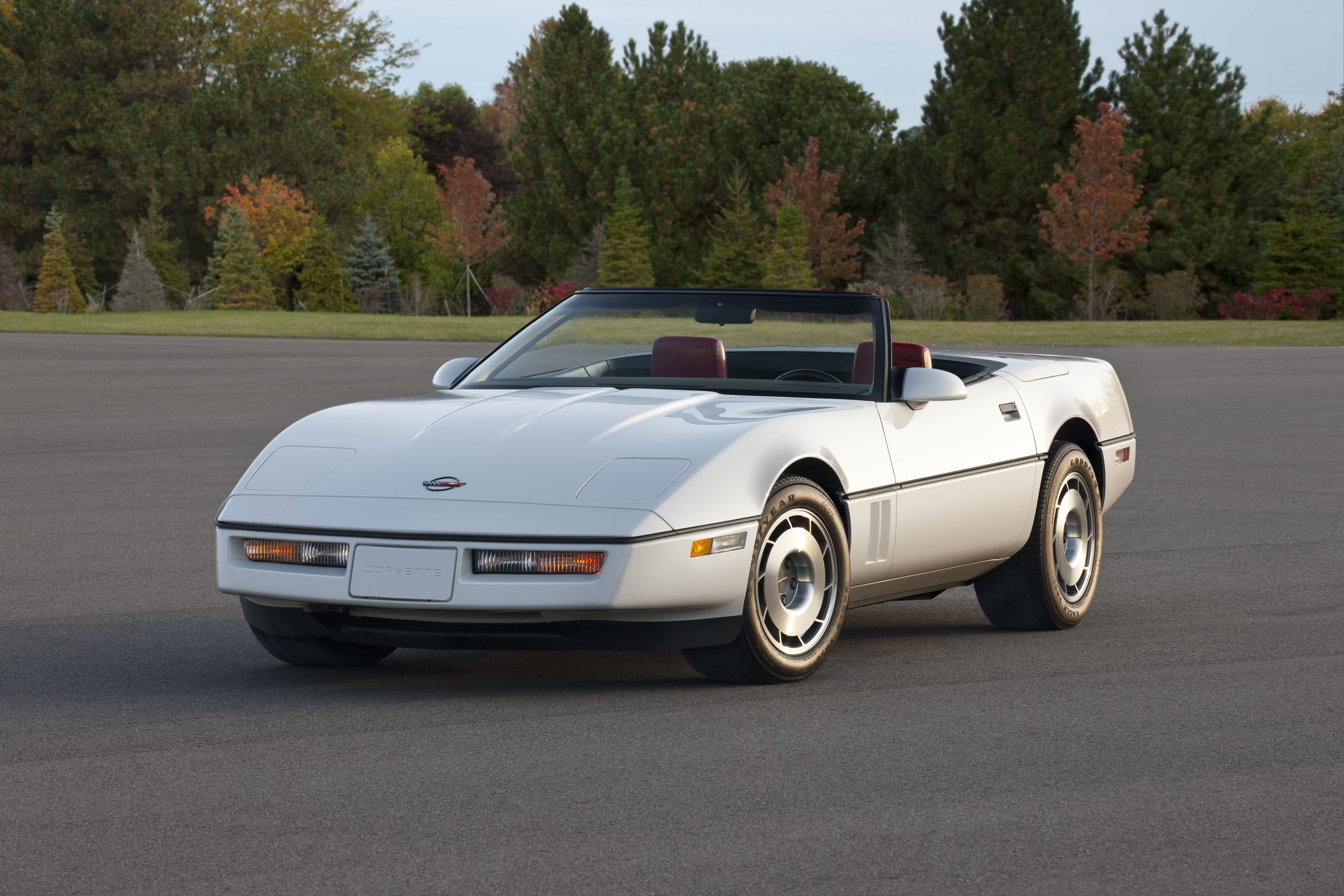
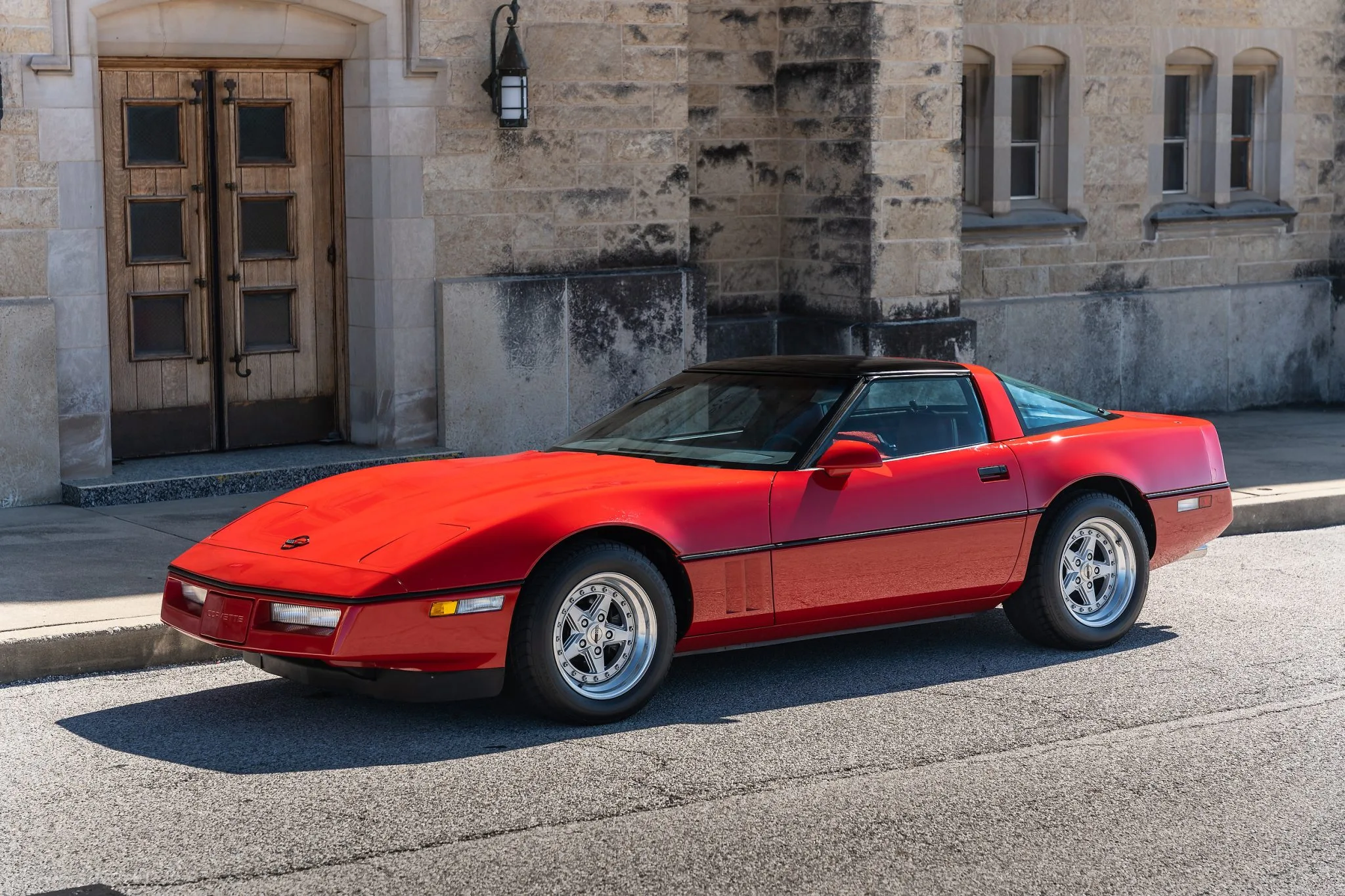
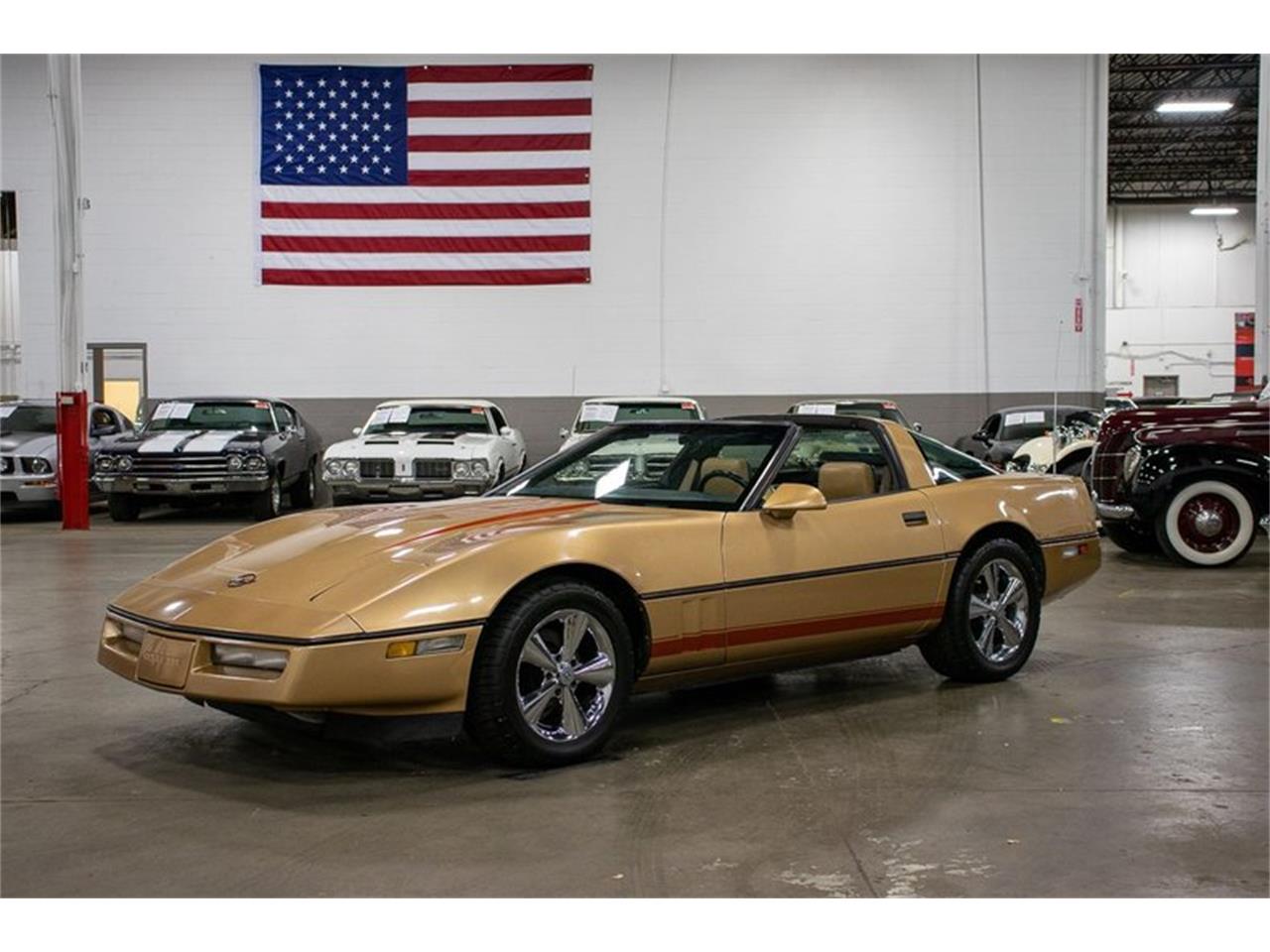
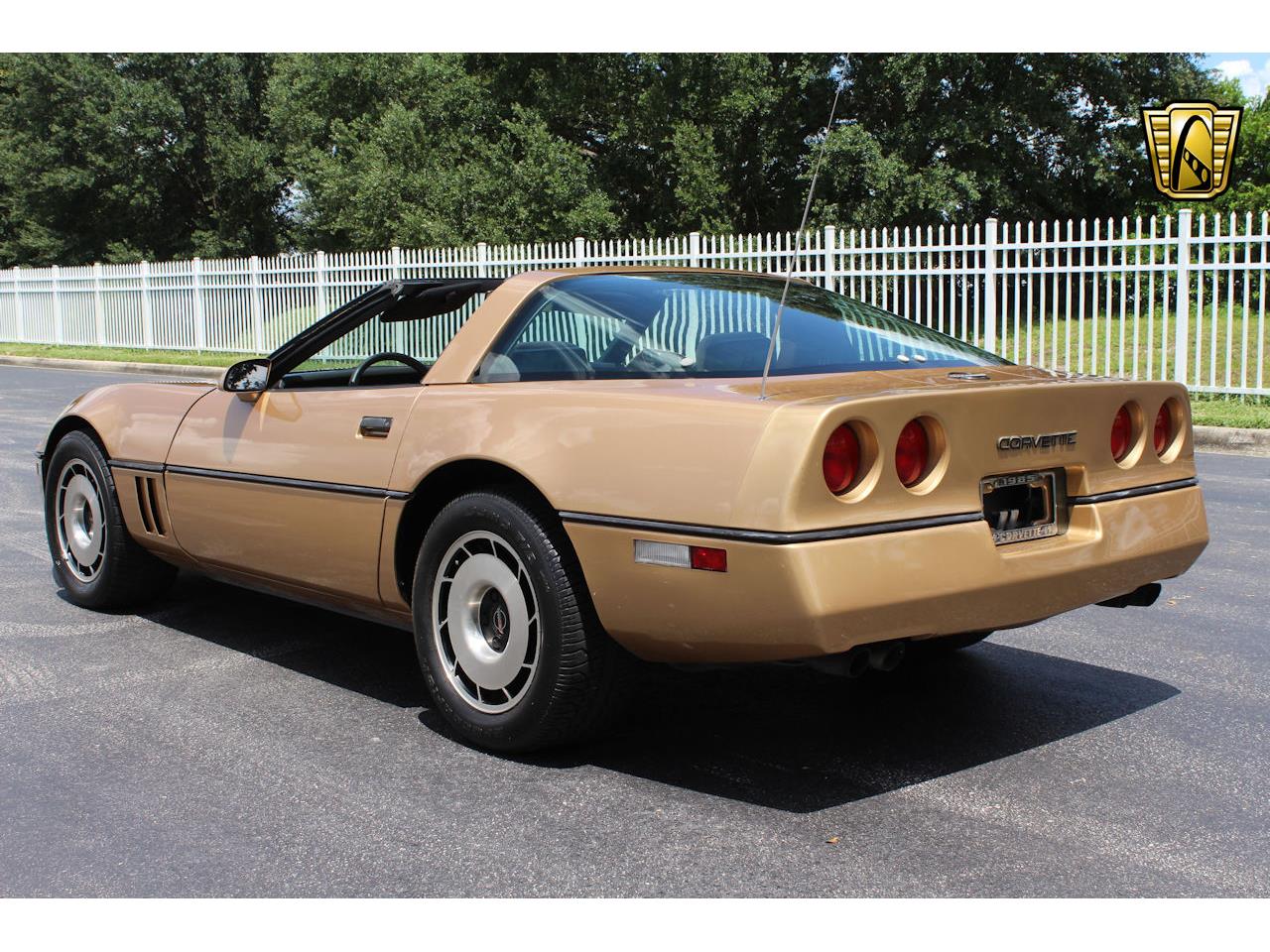

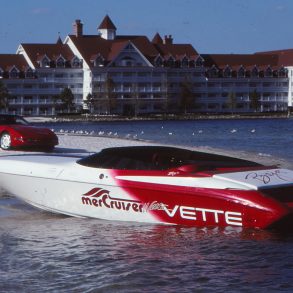
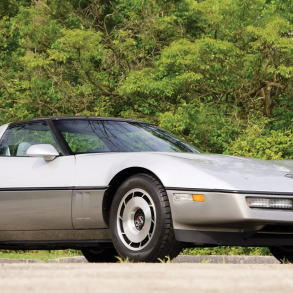
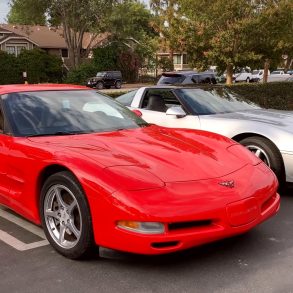
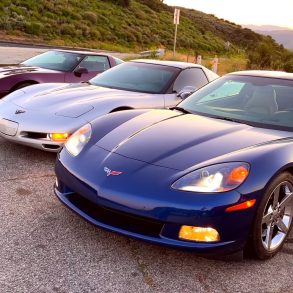
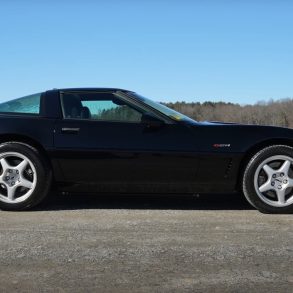
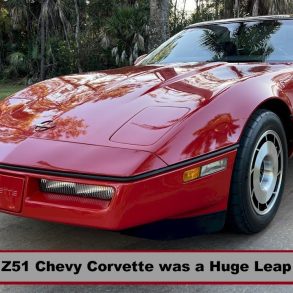


Excellent site.